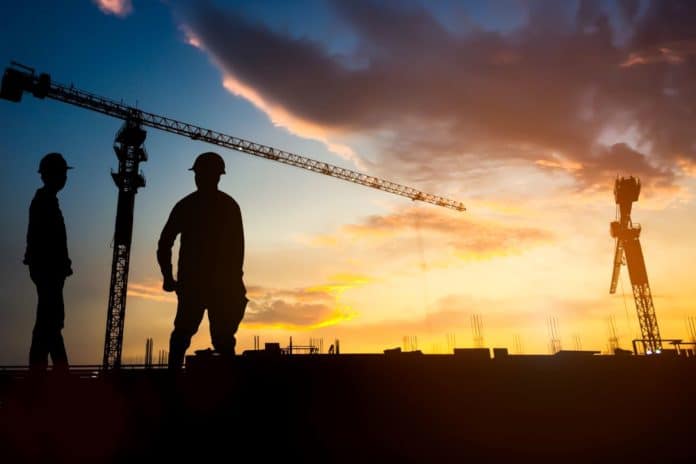When the sun goes down, construction projects face an entirely new set of risks. Darkness doesn’t just reduce visibility; it creates an environment that’s inherently more hazardous. Shadows can obscure tools, equipment, and edges, while reduced light makes it harder to gauge distances accurately, leading to increased risks of accidents. Nighttime construction, though crucial in urban areas to avoid daytime disruptions, requires significant safety measures to keep workers and the public safe in these conditions.
Construction teams work diligently to make nighttime sites as safe as possible, employing advanced lighting systems, enhanced visibility gear, and strict protocols to counteract the natural hazards that come with working in the dark. Here’s a look at the challenges darkness brings to construction zones and the proactive measures used to mitigate them.
Strategic Lighting: Shedding Light on Dark Corners
In a construction site, shadowed areas and hidden obstacles can quickly become serious hazards. Teams use high-powered LED lights and floodlights, carefully placed to brighten every essential area of the work zone. Construction zones may include portable light towers to illuminate larger spaces, making sure that workers have clear lines of sight and that shadows are minimized.
However, with intense artificial light comes the risk of glare, which can hinder visibility in its own way. Project managers position lights at specific angles and heights to avoid glare, ensuring the lighting setup allows workers to see clearly without blinding them or creating additional hazards. This approach ensures the dark corners of the site remain visible, reducing the chance of overlooked obstacles.
Enhanced Safety Gear to Improve Visibility
In dark conditions, even well-illuminated areas can make it difficult for workers to be seen. All workers on nighttime construction sites are required to wear high-visibility gear, including reflective vests, hard hats, and gloves. This gear allows them to stand out, even in areas where shadows or obstacles might obscure their presence, reducing the risk of collisions with machinery or other workers.
Reflective gear doesn’t just protect workers; it also makes them visible to drivers if the site is near a road. Ensuring that every worker is seen, high-visibility clothing helps mitigate one of the most challenging aspects of nighttime construction: limited visibility on all sides.
Operating Heavy Machinery in Low Light
Operating heavy machinery is a challenging task under the best conditions, but darkness amplifies the risks associated with this equipment. At night, the limited line of sight can make blind spots more dangerous and depth perception more difficult to judge. To counter this, operators use equipment fitted with additional lights and rely on radio communication to stay connected with other crew members. Team members who assist around heavy machinery wear enhanced reflective gear to be clearly visible.
For workers injured on-site, consulting a Denver construction accident lawyer can be an essential step in understanding their rights and next steps. Preventing these accidents, however, is a top priority, and nighttime protocols around heavy equipment aim to make operations safer for everyone.
Navigating the Increased Risk of Slips, Trips, and Falls
Falls are one of the leading causes of injuries in construction, and in darkness, the risks multiply. Shadows cast from uneven surfaces, trenches, and scaffolding can obscure these hazards, making slips or falls more likely. To prevent these incidents, construction companies install temporary guardrails, safety nets, and marked pathways to guide workers safely around high-risk areas. Clear and secure pathways are particularly important to prevent workers from accidentally entering hazardous zones.
In addition to pathway markings, workers receive training to use harnesses and wear non-slip boots to maintain stability. Regular inspections of scaffolding, ladders, and platforms help ensure all surfaces are secure. With these precautions in place, the risk of slips and falls in low-light areas is significantly reduced, creating a safer environment in a naturally more hazardous setting.
Mitigating the Risks of Fatigue in Darkness
Darkness naturally affects the body’s circadian rhythms, often causing drowsiness or slower reaction times, which can increase the likelihood of mistakes. Construction companies combat this through shorter shifts, regular breaks, and designated rest areas for workers to recharge. Additionally, supervisors monitor team members for signs of fatigue, ensuring that no one puts themselves or others at risk.
Managing fatigue effectively reduces errors and maintains safety on nighttime sites. Fostering a work environment that encourages workers to take breaks and stay alert helps offset the fatigue-related hazards that darkness can exacerbate.
Ensuring Adequate Emergency Preparedness for Nighttime Incidents
In the event of an accident at night, a quick and coordinated emergency response is essential. Construction projects train all workers in emergency protocols, including evacuation routes, first-aid procedures, and fire safety measures. Emergency kits, defibrillators, and first-aid stations are strategically placed throughout the site, ensuring that assistance is readily available if an accident occurs.
To further enhance preparedness, regular nighttime drills simulate potential incidents and improve reaction times. These drills allow team members to practice their roles in various emergency scenarios, making sure they are equipped to handle real-time challenges should an accident arise. A strong emphasis on emergency readiness helps nighttime construction sites protect workers and minimize harm when unexpected situations occur.
Addressing Traffic Hazards Near Construction Zones
For nighttime projects near roadways, the presence of passing vehicles adds another layer of risk. Drivers may struggle to spot construction zones in the dark, which increases the danger to both workers and motorists. Construction sites use reflective cones, barricades, and flashing signals to improve visibility, indicating the boundaries of the site and alerting drivers of upcoming slow-down zones.
In some cases, flaggers or traffic controllers are stationed to direct cars safely around the site, minimizing the risk of collisions. Controlling traffic flow and illuminating work areas clearly protect everyone on-site from nighttime road hazards.
Increasing Site-Wide Communication
Emphasizing communication creates an environment where workers stay connected, aware, and informed about site conditions. This approach is especially valuable in the dark, where hazards can go unseen without proper coordination.


